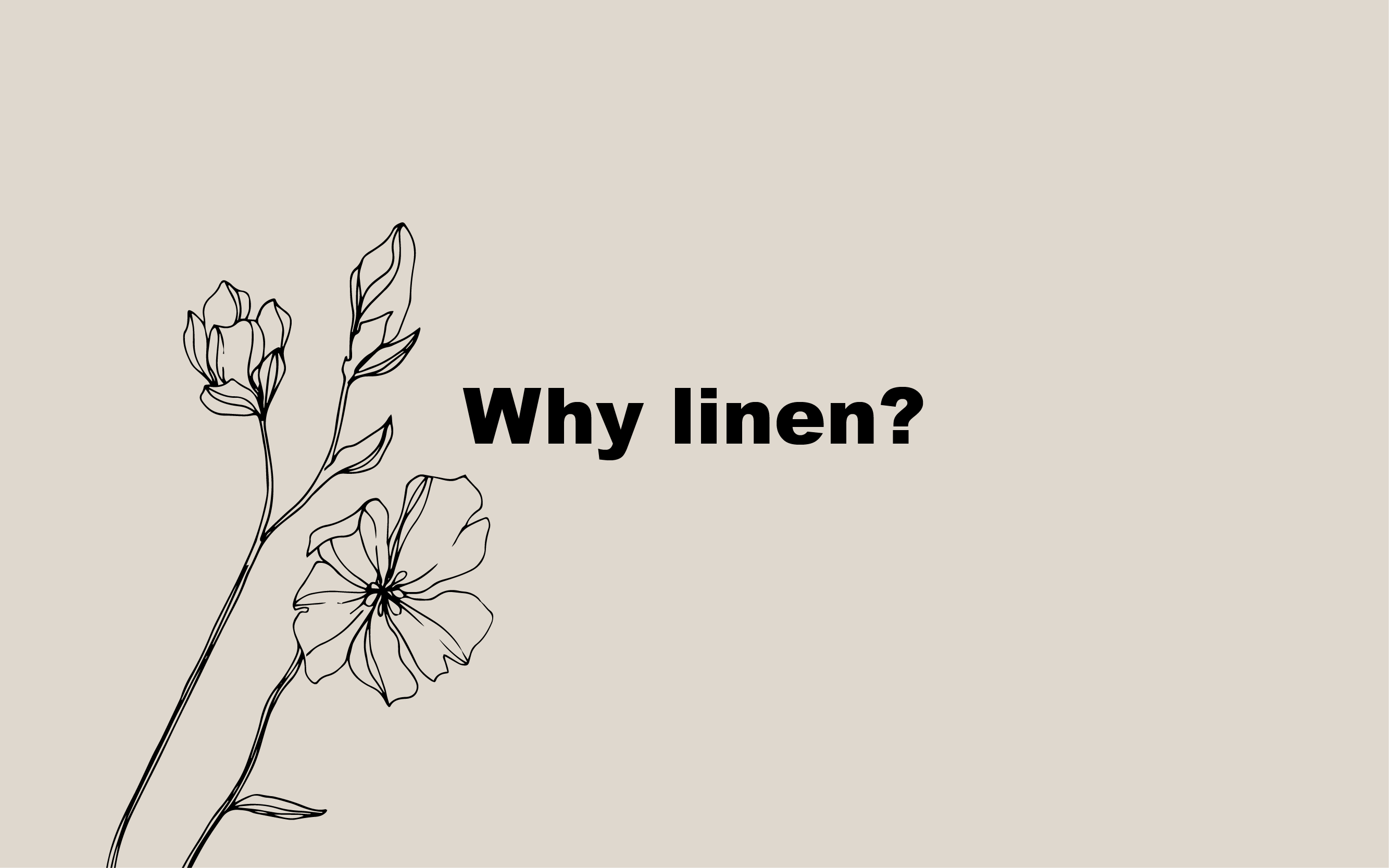Why linen is good for you and the planet?

Linen is often hailed as one of the most sustainable fabrics around. Made from the flax plant, linen has been used for centuries, and it’s making a big comeback as more people embrace eco-conscious fashion. If you’re wondering whether linen is the right choice for your wardrobe and the planet, this post will guide you through its benefits and potential drawbacks.
The benefits of linen for you
Linen isn’t just a fabric that’s good for the planet—it also offers several benefits for your skin and comfort. Here’s why it might become your new favorite material:
1. Breathable and moisture-wicking
Linen is naturally breathable, meaning air flows easily through the fabric to keep you cool, especially on hot days. It’s also moisture-wicking, helping to draw sweat away from your body and keep you dry. Whether you’re walking around in the sun or just want to stay comfortable in your day-to-day, linen keeps you cool without trapping heat.
2. Hypoallergenic
If you have sensitive skin, linen is a great option. It’s naturally hypoallergenic, meaning it resists dust mites and other allergens. Unlike synthetic fabrics that can cause irritation, linen allows your skin to breathe and reduces the risk of rashes or discomfort.
3. Durable and long-Lasting
Linen is a durable fabric that can last for years, sometimes even decades. Its natural fibers are strong and resistant to wear and tear, so you won’t have to replace your linen items as often as you would with other fabrics. Linen offers long-term value, making it a worthwhile investment.
4. Naturally antibacterial
Linen also has antibacterial properties, which help it stay fresh for longer between washes. This means fewer laundry days and less water and energy used—good for both your schedule and the planet.
Linen’s eco-friendly superpowers
Choosing linen isn’t just good for you—it’s great for the environment too. Here’s how linen helps reduce your carbon footprint:
1. Flax: A low-maintenance crop
Linen is made from flax, a plant that requires minimal water and doesn’t need pesticides to grow. Unlike cotton, which is a thirsty crop, flax can thrive with just rainwater.
2. Biodegradable and compostable
Linen is 100% biodegradable, meaning it will break down naturally and not pollute the environment. It’s also compostable, so you can feel good knowing that linen doesn’t contribute to landfill waste.
3. Lower carbon footprint
The production of linen has a lower carbon footprint than many other fabrics. Flax plants absorb carbon dioxide as they grow, which helps reduce the amount of CO2 in the atmosphere. In addition, the process of turning flax into linen uses fewer chemicals and less water compared to other fabric production methods.
4. Water and energy efficient
Linen’s manufacturing process is more water- and energy-efficient than many other fabrics. Unlike cotton, which requires extensive irrigation, flax relies mostly on rainfall. The energy needed to process linen is also lower, making it a more eco-conscious option.
The other side of linen: Pros and cons you should know
While linen is a fantastic material, it’s not perfect. Here are a few things to keep in mind before you choose linen:
1. Wrinkles are part of the charm
Linen has a tendency to wrinkle—it’s just part of the natural fabric. If you prefer a crisp, polished look, you’ll need to iron it, or embrace the relaxed, lived-in look. It’s all about personal preference, but expect some wrinkles with linen.
2. Higher initial cost
Linen can be a bit pricier than cotton or synthetic fabrics. However, given its durability and long lifespan, it’s an investment that can save you money in the long run. Plus, you’re opting for a more sustainable fabric that will last for years to come.
3. Stiffness at first
New linen may feel a little stiff when you first wear it, but don’t worry—it softens up over time with washing and wear. If you’re looking for something soft right out of the gate, it might take a little time for linen to become truly comfortable.
Linen and the future of sustainable fashion
As more people turn to sustainable fashion, linen is emerging as a key fabric in eco-conscious wardrobes. Its long-lasting qualities, low environmental impact, and comfort make it a great alternative to synthetic materials. Whether you’re buying clothes, bedding, or home décor, linen is versatile, durable, and kinder to the planet.
By choosing linen, you're not only making a smart choice for your wardrobe but also supporting a more sustainable future. With growing awareness about the environmental cost of fast fashion, linen is proving that sustainable style can be both practical and beautiful.
Making Your Choice
Linen offers a rare combination of personal and environmental benefits. Its breathability, durability, and natural antibacterial properties make it practical for daily wear, while its sustainable production and biodegradability make it a responsible choice for our planet.
While the wrinkles and higher initial cost might give you pause, consider the long-term value: a naturally comfortable, lasting fabric that helps protect our environment. When you choose linen, you're making a statement about what matters in fashion—quality, comfort, and sustainability.
References
- Tags: linen



